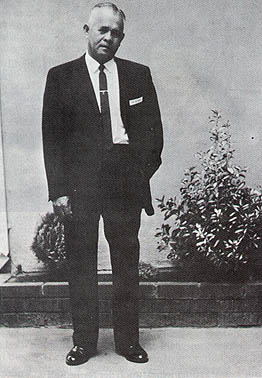Rene Latosa's initial exposure to the Filipino
martial arts came through his ethnic and cultural environment. As a young child,
Rene first witnessed martial arts during celebrations (after the crop season
was over), cultural events, and hanging around the Filipino Community Center
in Stockton, CA. At this community center he would watch the "Old Timers" amuse
themselves by hitting their walking sticks together as if they were sword fighters
and applying locks to each other.
As a teenager, many of Rene's friends were studying
Judo. He asked his father if he could take Judo or Karate lessons. His father
offered to teach his young son "jitsu." He didn't believe his father knew anything
about martial arts, so he did not pursue that avenue. His mother recommended
taking self-defense classes taught by a long time family friend, Angel Cabales,
at the Stockton Escrima Academy.
His first visit to the Stockton Escrima Academy
was in 1968. Rene was greeted by Angel, holding a cigarette in one hand and
a rattan stick in the other. Angel, having known Rene since he was small, told
him to grab a stick and Angel proceeded to demonstrated a quick technique. From
this point forward, Rene was hooked and he continued to study and eventually
taught at the Academy for over five years.
At the Stockton Escrima Academy in 1968, "formal
training" did not exist. The method of teaching employed at the academy was
strictly on a teacher to student basis. Rene remembers the ambiance at the academy
was very casual, Angel was just "Angel." For all the students at the academy,
the title "Grandmaster" was inherently Angels, and his alone. To Rene's advantage,
during his first five months of training, he was the only one of three students
who showed up for lessons. Rene's initial training, with a ratio of four instructors
to one student- Angel Cabales, Max Sarmiento, Leo Giron, and Dentoy Revilar-
provided plenty of diversity in styles. These four individuals played a definite
role in shaping the basic format of the Latosa-Escrima system; however, his
greatest influence was his father.
During those early days at the academy, Angel
did not have student certificates or rankings. They did not exist. You were
an instructor when Angel said you were (Rene did receive an instructors certification
from Angel and Max). Angel always said that certificates, belts, and titles
meant nothing without the ability to back it up.
 Bill
Newman was influential in Rene's quest to spread the Filipino martial arts throughout
Europe. Because the politics of martial arts seemed to get in the way of teaching,
Rene considered abandoning his goals. However, Bill persuaded Rene to continue
teaching, spreading the art and sharing his insights and philosophies. Today,
Bill is the second in command of the Latosa-Escrima System.
Bill
Newman was influential in Rene's quest to spread the Filipino martial arts throughout
Europe. Because the politics of martial arts seemed to get in the way of teaching,
Rene considered abandoning his goals. However, Bill persuaded Rene to continue
teaching, spreading the art and sharing his insights and philosophies. Today,
Bill is the second in command of the Latosa-Escrima System.

 Through
the invitation of Keith Kernspecht, a noted Wing Tsun instructor and head of
the EWTO (the largest Wing Tsun and Escrima Organization in the world), Rene
and Bill exposed the art to Germany. However, it was with Keith's help and his
organization that allowed Escrima to grow into what it is today. It was there
that the exposure of the Filipino martial arts started to gain momentum and
the idea of the Philippine Martial Arts Society as an organization originated.
The following year (1977), EWTO published an Escrima book. Rene and Bill became
regulars on the EWTO seminar circuit throughout Europe. Rene, as his tour of
military duty ended, returned to sunny California and Bill Newman was responsible
for the growth of the Filipino martial arts throughout Europe. As Rene was building
up a significant following dedicated to the concepts of Combat-Escrima, under
the Philippine Martial Arts Society in the United States, Bill was doing the
same in Europe.
Through
the invitation of Keith Kernspecht, a noted Wing Tsun instructor and head of
the EWTO (the largest Wing Tsun and Escrima Organization in the world), Rene
and Bill exposed the art to Germany. However, it was with Keith's help and his
organization that allowed Escrima to grow into what it is today. It was there
that the exposure of the Filipino martial arts started to gain momentum and
the idea of the Philippine Martial Arts Society as an organization originated.
The following year (1977), EWTO published an Escrima book. Rene and Bill became
regulars on the EWTO seminar circuit throughout Europe. Rene, as his tour of
military duty ended, returned to sunny California and Bill Newman was responsible
for the growth of the Filipino martial arts throughout Europe. As Rene was building
up a significant following dedicated to the concepts of Combat-Escrima, under
the Philippine Martial Arts Society in the United States, Bill was doing the
same in Europe.